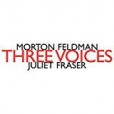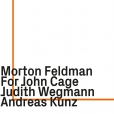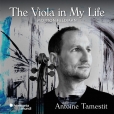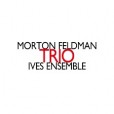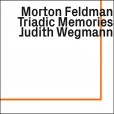Your basket is empty

Definitive performances by pianist Judith Wegmann and Andreas Kunz.
Feldman: “The degrees of stasis, found in a Rothko or Guston, were perhaps the most significant elements I brought to my music from painting. For me, stasis, scale, and pattern have put the whole question of symmetry and asymmetry in abeyance.”
Cage about Feldman: “Listening to this music one takes as a spring-board the first sound that comes along; the first something springs us into nothing and out of that nothing arises the next something… like an alternating current. Not one sound fears the silence that extinguishes it. And no silence exists that is not pregnant with sound.”
‘This work has accompanied me like a secret, an almost silent meditation on what the viola means in my life. Through it I have experienced how much this instrument connects me to listening, to patience, to inwardness. Here Morton Feldman is not composing in order to shine, but so as to make us hear the infinitesimal, the unspeakable – that is what has touched me profoundly, and I want to share it with the listeners.’
Antoine Tamestit
‘The piano was at the centre of Feldman’s musical world. Even when he was writing for other instruments he would work at the piano because ‘it slows me down and you can hear the time element much more, the acoustical reality.’ Perhaps more than any of his other piano music Triadic Memories is about that reality, the acoustic space created by the piano’s strings and soundboard, and in Judith Wegmann’s recording that space is within a magnificent Bösendorfer 280VC piano.
‘The score specifies that the piano’s sustaining pedal should be held halfway down throughout the piece, as if the resonance of the instrument is intended to become a means of remembering the music. Feldman was thinking of the way that Cy Twombly would scratch graffiti-like markings into a gesso ‘where the tint changed ever so slightly.’ Feldman wanted a tonal ground and took the idea of ‘a little gesso’ from Twombly, making music that, as he put it, is ’on this very precarious gesso smudge.’ Gesso, smudge, memory.’
